Wolfram Function Repository
Instant-use add-on functions for the Wolfram Language
Function Repository Resource:
Import astronomical data from the VizieR database
ResourceFunction["VizierCatalogData"]["keywords","prop"] returns the property "prop" of the catalogues found by the query specified by "keywords". | |
ResourceFunction["VizierCatalogData"][list] makes the query using a list of keywords. | |
ResourceFunction["VizierCatalogData"][list,"prop"] returns the property "prop" of the catalogues found using a list of keywords. |
| "Data" | actual data of the catalogs |
| "ColumnList" | List of all the columns |
| "ColumnDescription" | Dataset describing the columns |
| "Title" | titles of the catalogs |
| "CatalogSize" | number of rows of the catalogs |
| "Metadata" | Dataset showing the metadata |
| MaxItems | 50 | an Integer specifying the maximun number of rows in each table |
| "Columns" | "Default" | List containing the columns to retrieve, or All to get all columns of a catalog |
| "Filter" | None | a Select operator specifying a filter to apply in the query |
| "DataSource" | "France" | origin of the data |
| "AstroCenter" | Automatic | center of sky region |
| "AstroRange" | All | range of sky region |
| r | explicit radius of a circle |
| {r1,r2} | inner and outer radius of an annulus |
| {{ra1,ra2},{dec1,dec2}} | explicit limit for right ascension and declination |
| "Dataset" | a dataset with table names as keys and lists of associations as values |
| "Association" | an association with table names as keys and lists of associations as values |
| "RawData" | an association with table names as keys and lists as values |
Get the catalogues that match with the keyword Hipparcos:
| In[1]:= |
| Out[1]= | 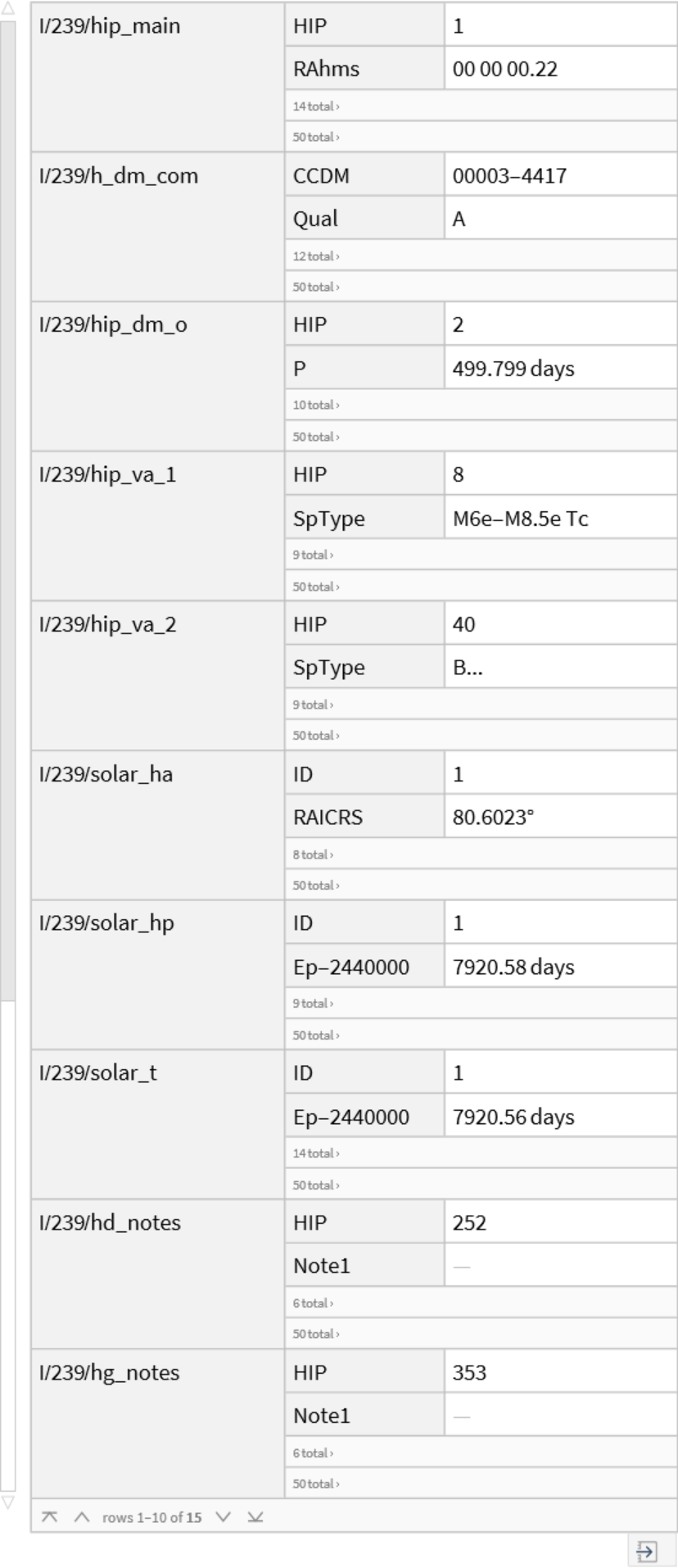 |
Get just the first table of the last query with 200 rows:
| In[2]:= |
| Out[2]= | 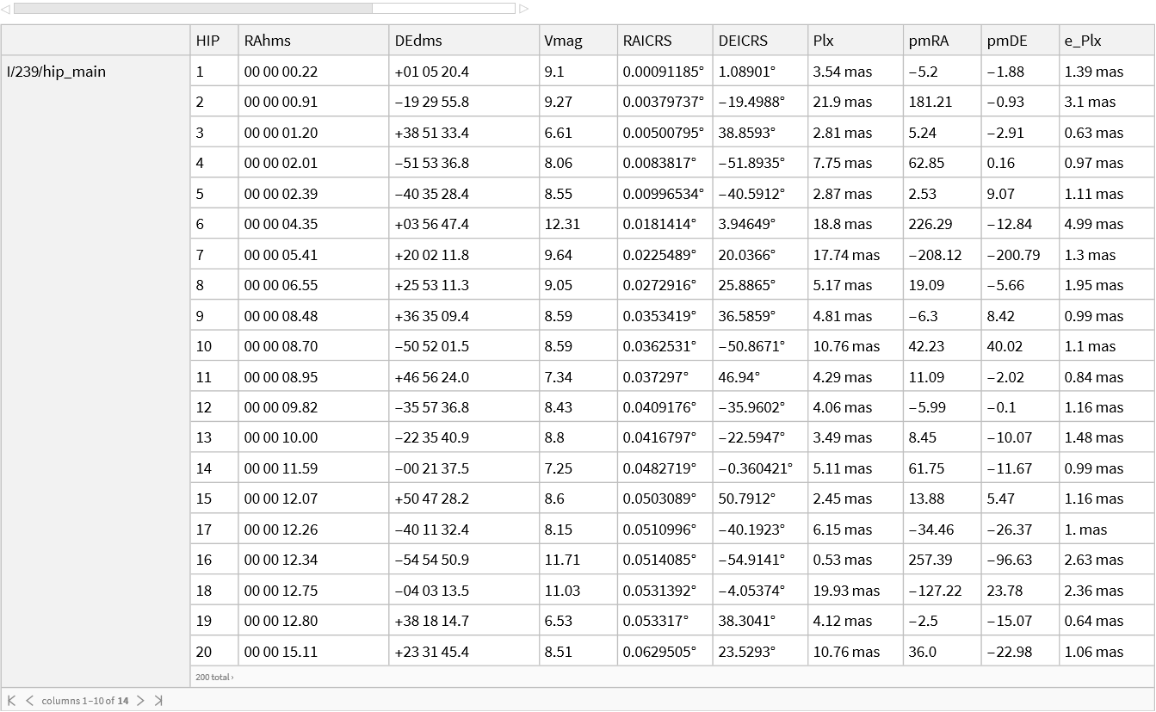 |
Get the metadata of the Fifth Fundamental Catalog using its table name "I/149A/catalog":
| In[3]:= |
| Out[3]= | 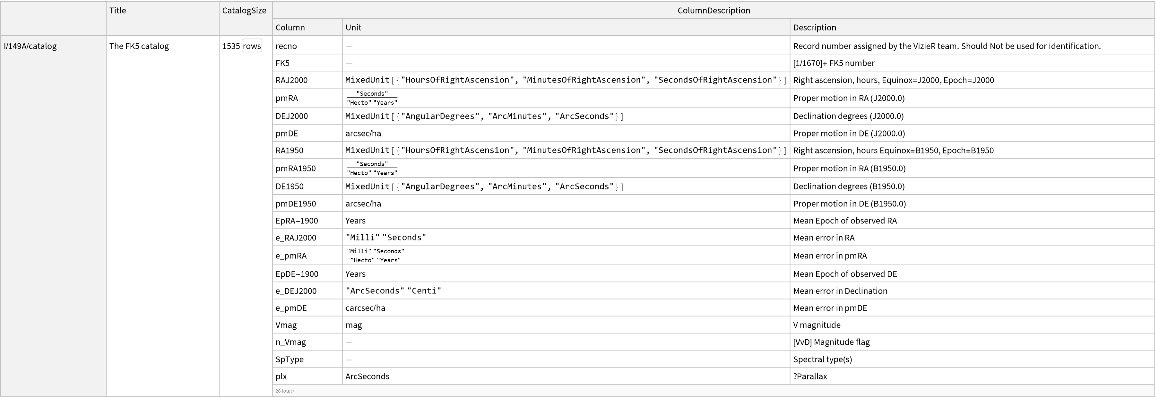 |
Get the whole catalog:
| In[4]:= |
| Out[4]= | 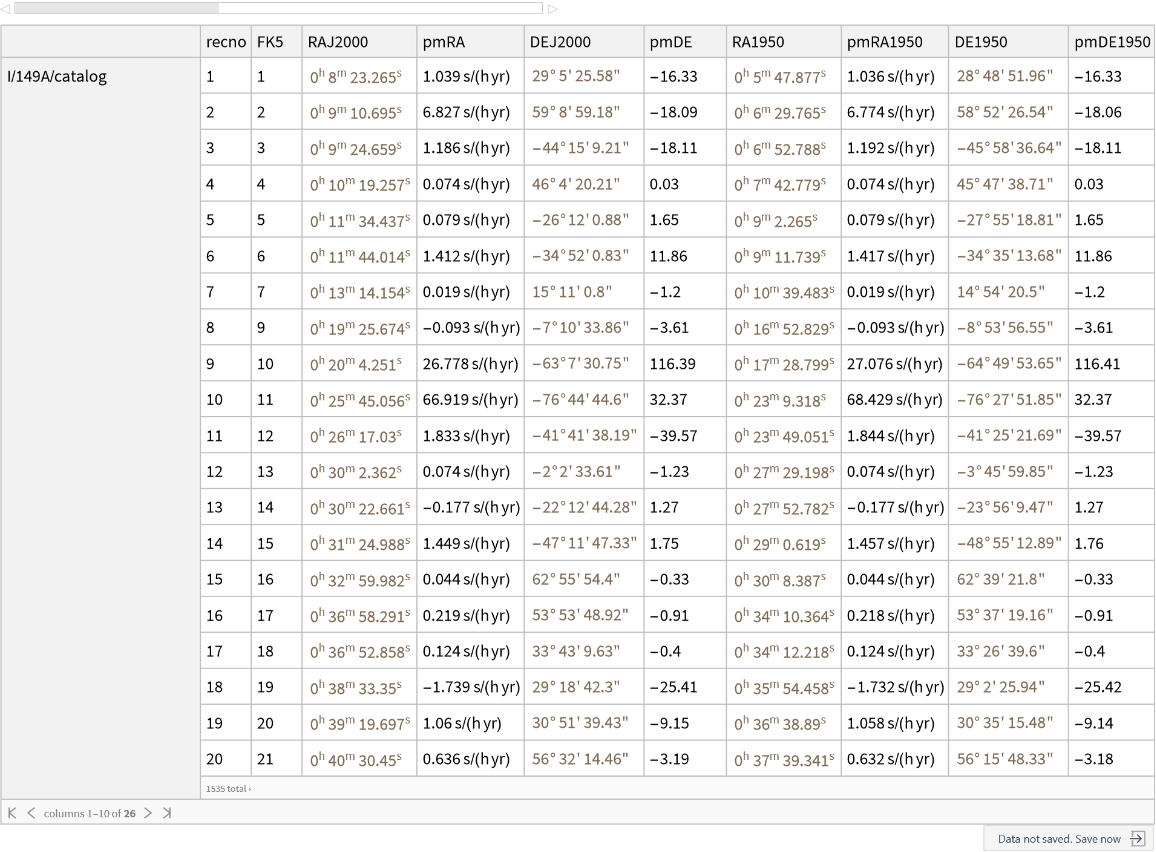 |
Or equivalently using just the one argument function:
| In[5]:= |
| Out[5]= | 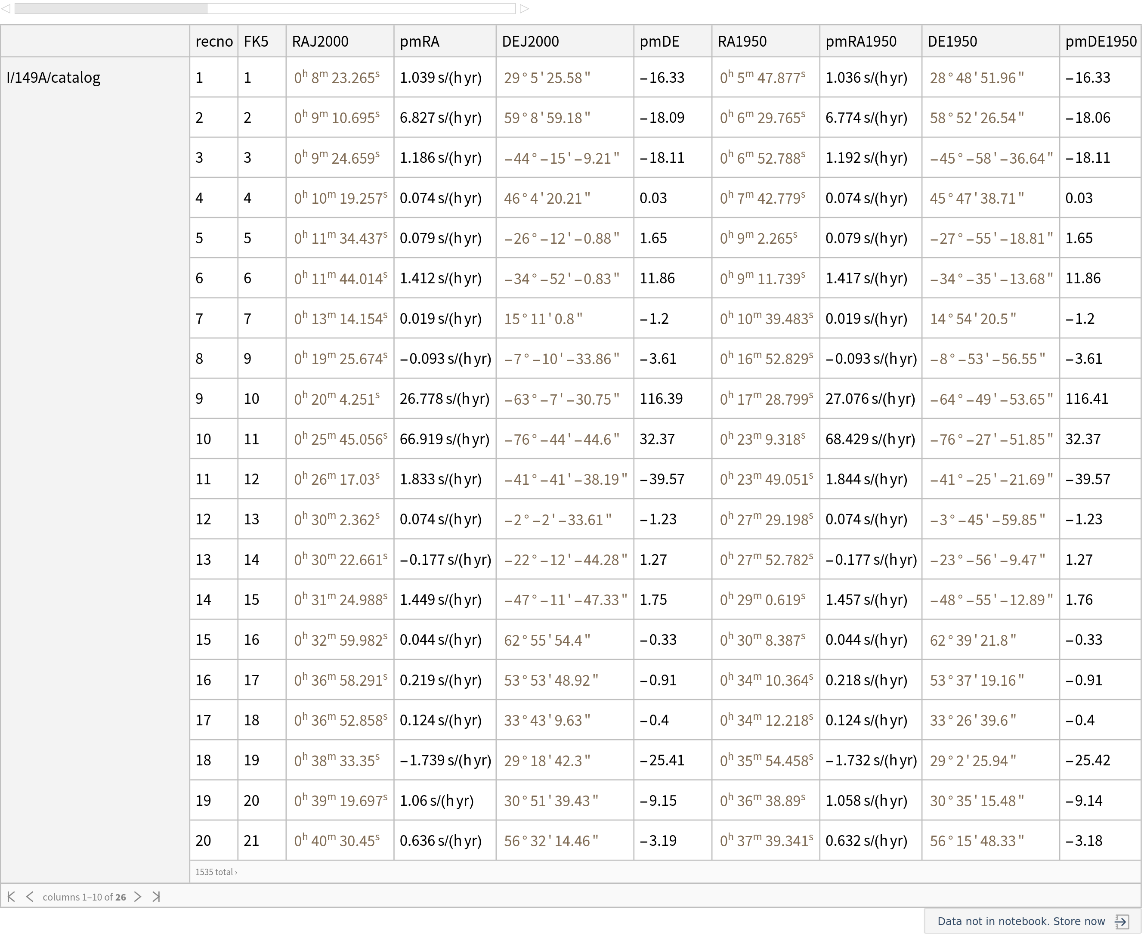 |
Using "RawData" as the data modifier can reduce the memory consumption:
| In[6]:= |
| Out[6]= |  |
See memory consumption:
| In[7]:= |
| Out[7]= |
VizieR does not return all the columns in a catalog by default:
| In[8]:= | ![Dimensions[
Values@ResourceFunction[
"VizierCatalogData", ResourceSystemBase -> "https://www.wolframcloud.com/obj/resourcesystem/api/1.0"]["I/149A/catalog", "RawData", MaxItems -> 1, "Columns" -> "Default"]]](https://www.wolframcloud.com/obj/resourcesystem/images/55d/55d6fee4-63ee-4394-833c-83fa4746bdb7/70b99f010e502a02.png) |
| Out[8]= |
To get all the columns in a catalog use "Columns"→All:
| In[9]:= | ![Dimensions[
Values@ResourceFunction[
"VizierCatalogData", ResourceSystemBase -> "https://www.wolframcloud.com/obj/resourcesystem/api/1.0"]["I/149A/catalog", "RawData", MaxItems -> 1, "Columns" -> All]]](https://www.wolframcloud.com/obj/resourcesystem/images/55d/55d6fee4-63ee-4394-833c-83fa4746bdb7/4d9dbe4ecbb939df.png) |
| Out[9]= |
Calculate the time to get data from the VizieR mirror in China:
| In[10]:= | ![First@AbsoluteTiming[
ResourceFunction[
"VizierCatalogData", ResourceSystemBase -> "https://www.wolframcloud.com/obj/resourcesystem/api/1.0"]["I/149A/catalog", "RawData", MaxItems -> All,
"Columns" -> All, "DataSource" -> "China"]]](https://www.wolframcloud.com/obj/resourcesystem/images/55d/55d6fee4-63ee-4394-833c-83fa4746bdb7/1e1cccf21ee2af7d.png) |
| Out[10]= |
Using a different mirror can save time:
| In[11]:= | ![First@AbsoluteTiming[
ResourceFunction[
"VizierCatalogData", ResourceSystemBase -> "https://www.wolframcloud.com/obj/resourcesystem/api/1.0"]["I/149A/catalog", "RawData", MaxItems -> All,
"Columns" -> All, "DataSource" -> "US"]]](https://www.wolframcloud.com/obj/resourcesystem/images/55d/55d6fee4-63ee-4394-833c-83fa4746bdb7/52584179d8fa45bb.png) |
| Out[11]= |
Get data from the VizieR mirror in China:
| In[12]:= |
| Out[12]= | 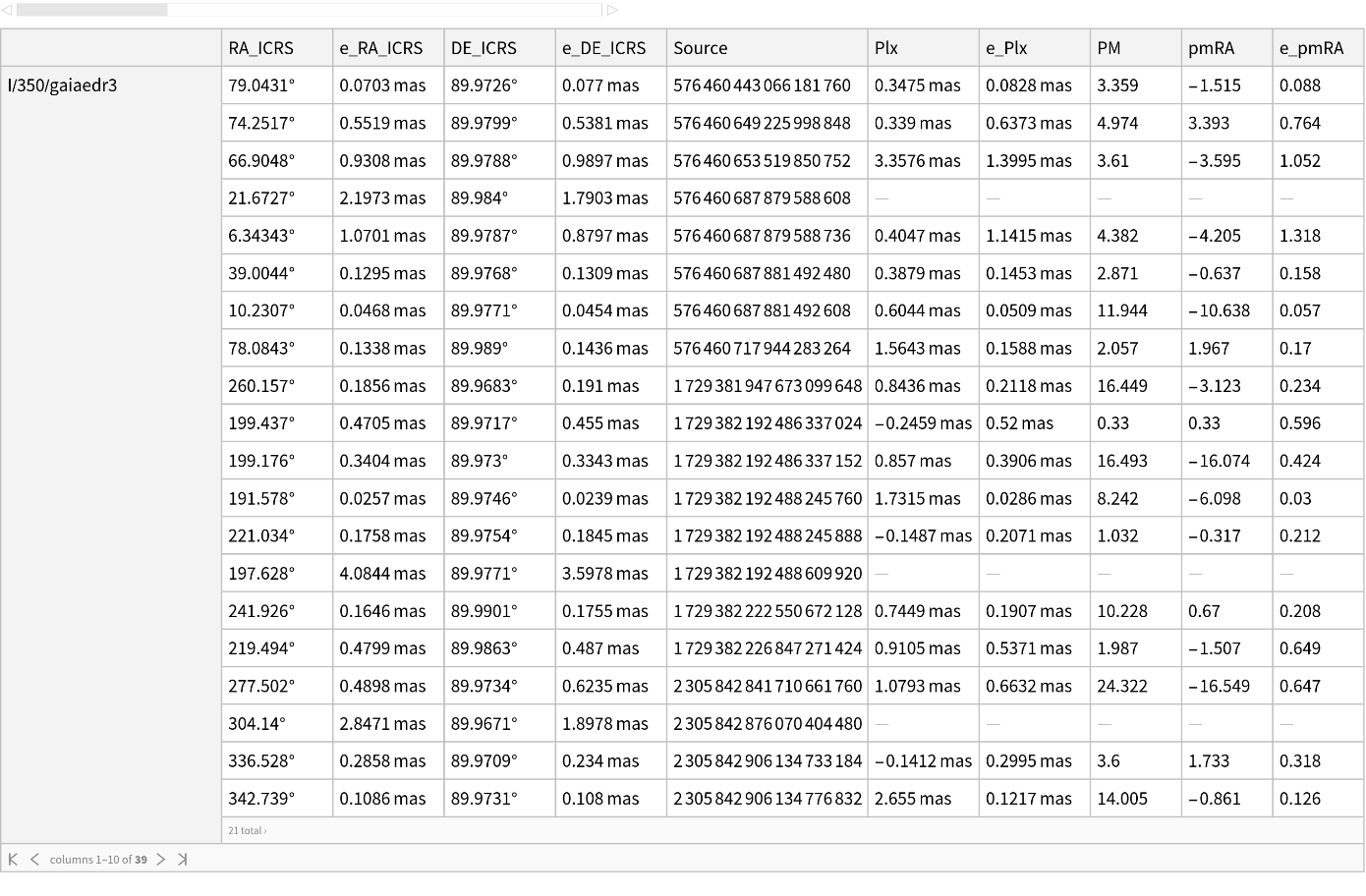 |
Get the first 5 rows of a catalog:
| In[13]:= |
| Out[13]= |  |
Get the list of columns of a catalog:
| In[14]:= |
| Out[14]= |  |
Get specific columns from the catalog:
| In[15]:= |
| Out[15]= | 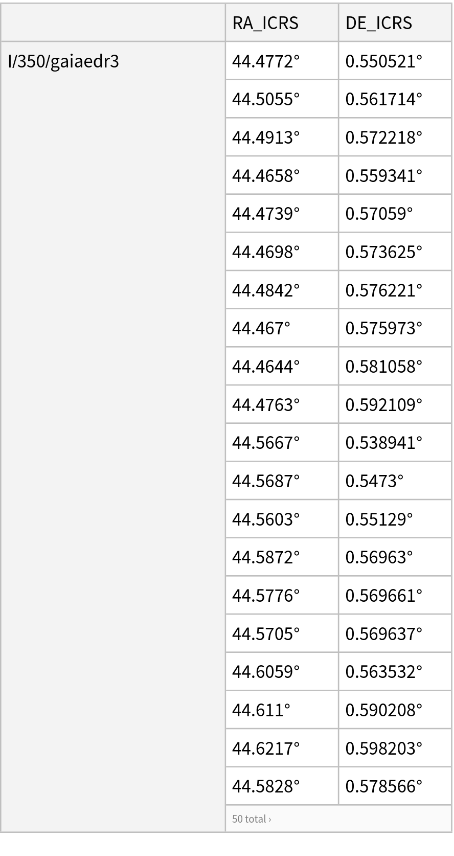 |
Data in tables can be filtered using the operator form of Select. For example, apply a filter in the "Plx" column of the table "I/350/gaiaedr3":
| In[16]:= |
| Out[16]= | 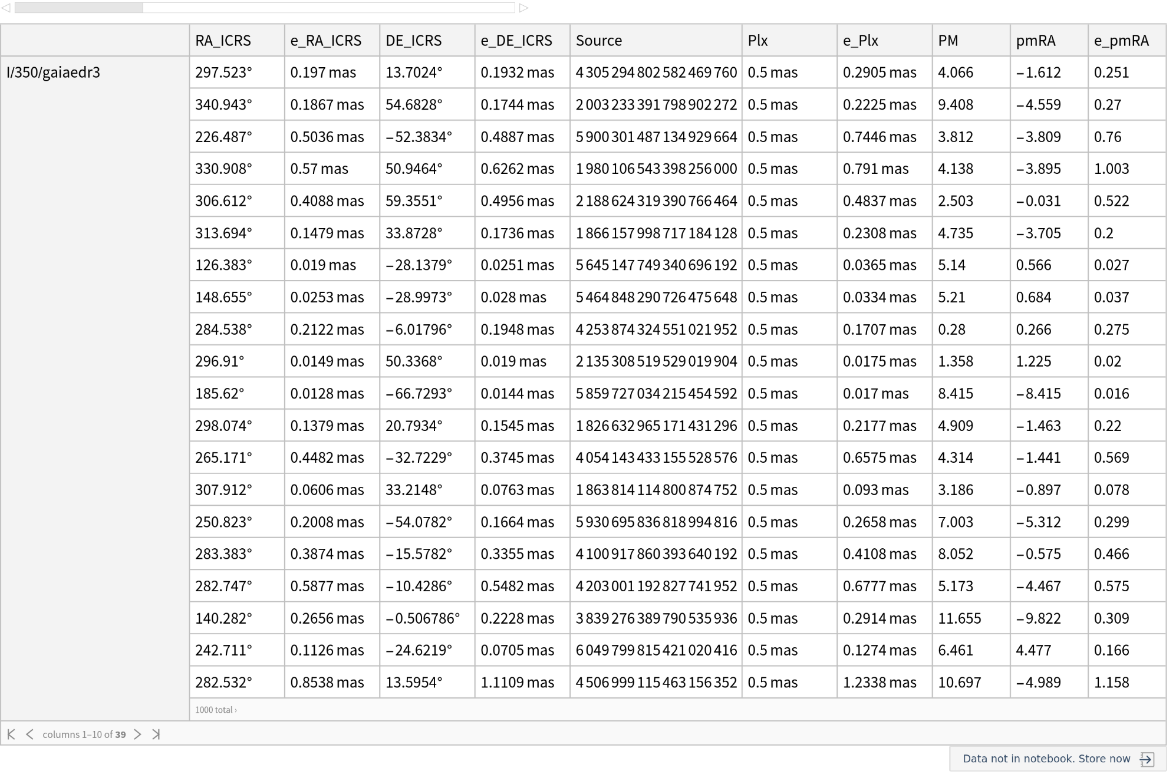 |
Test the filter:
| In[17]:= |
| Out[17]= | 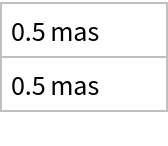 |
Select the rows with non-missing value in the column "RVDR2":
| In[18]:= |
| Out[18]= | 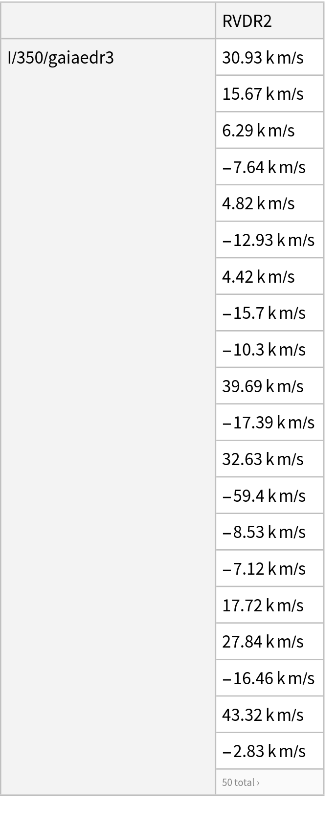 |
Apply a filter in several columns at a time:
| In[19]:= |
| Out[19]= | 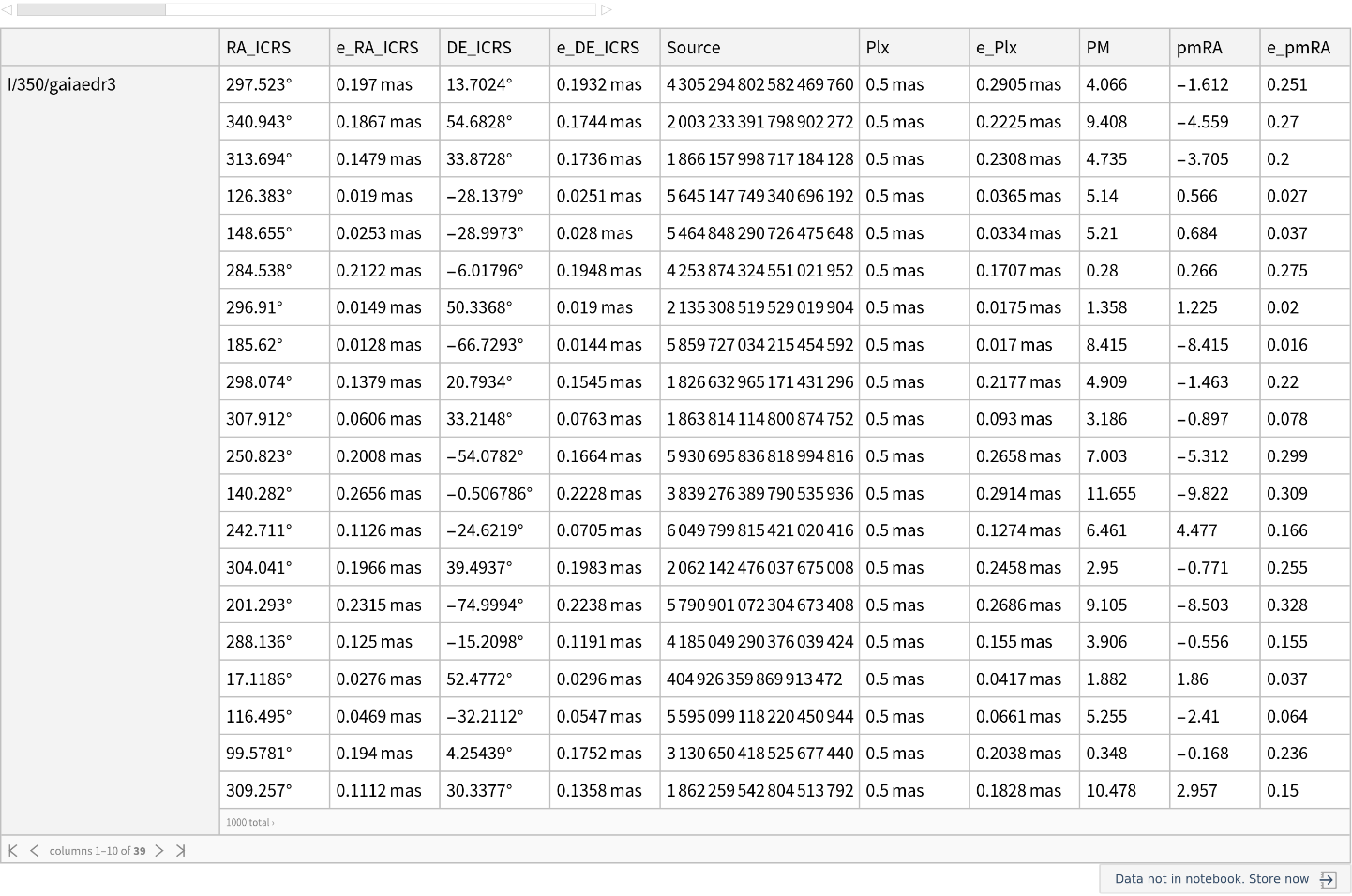 |
Test the filter:
| In[20]:= |
| Out[20]= | 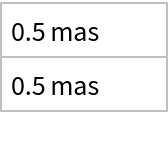 |
| In[21]:= |
| Out[21]= |
Apply a filter on string values:
| In[22]:= |
| Out[22]= | 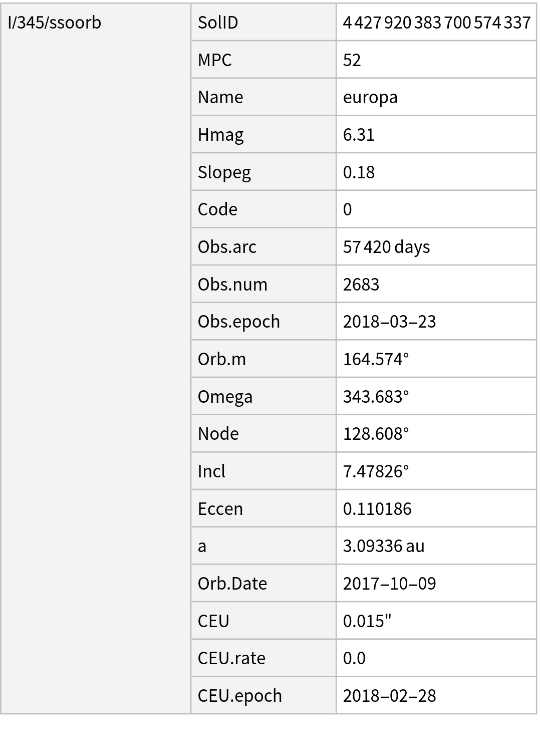 |
Get the objects of the table "I/350/gaiaedr3" within a circle centered at the position of and a radius :
| In[23]:= | ![ResourceFunction[
"VizierCatalogData", ResourceSystemBase -> "https://www.wolframcloud.com/obj/resourcesystem/api/1.0"]["I/350/gaiaedr3", "AstroCenter" -> Entity["Star", "HIP5054"], "AstroRange" -> Quantity[20, "ArcMinutes"], MaxItems -> 1000]](https://www.wolframcloud.com/obj/resourcesystem/images/55d/55d6fee4-63ee-4394-833c-83fa4746bdb7/4670c03de0d2345e.png) |
| Out[23]= |  |
Get the objects of the table "I/350/gaiaedr3" within an annulus centered at the origin of the equatorial coordinates with inner radius of and outer radius of :
| In[24]:= |
| Out[24]= | 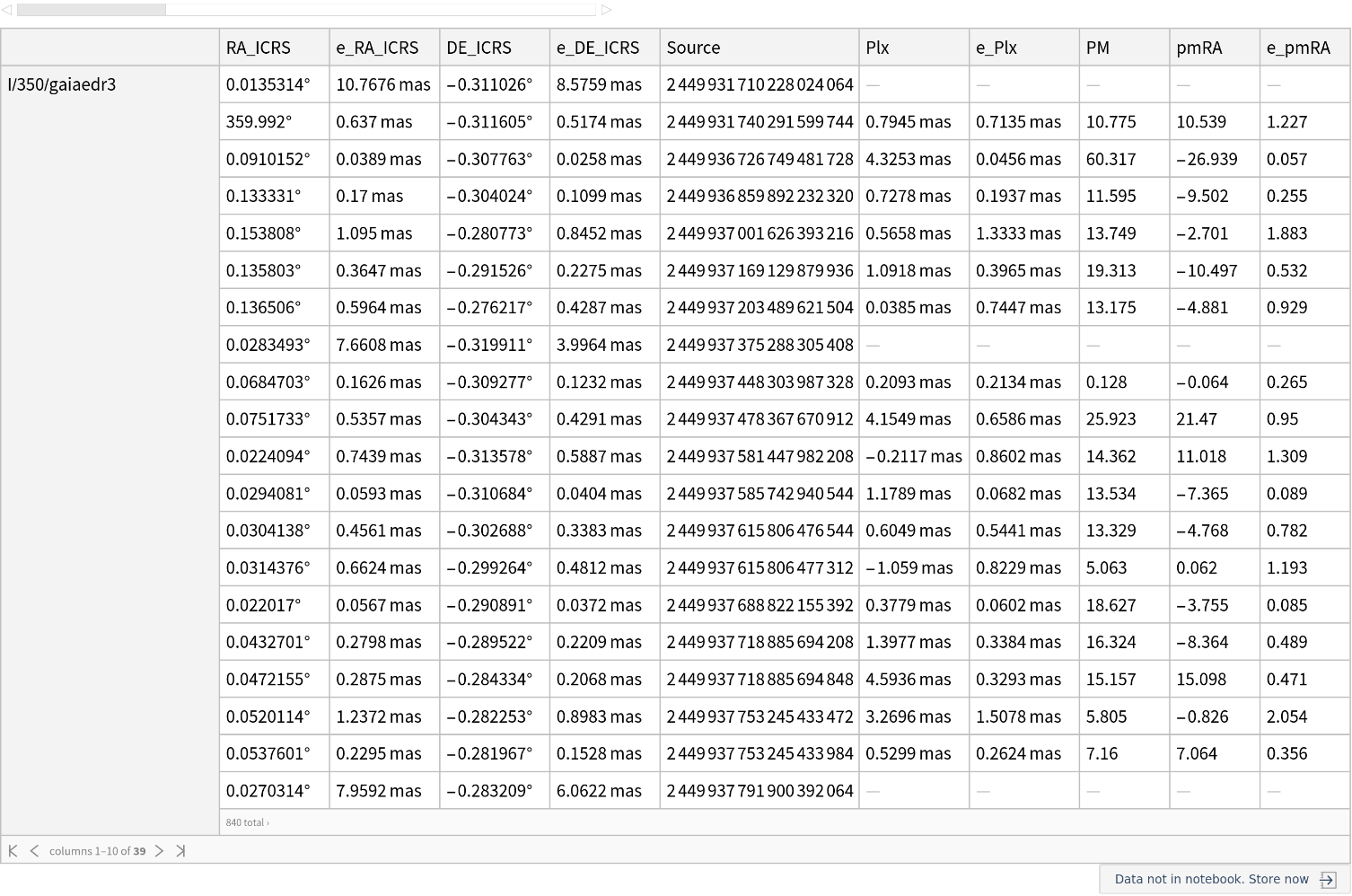 |
Get the objects of the table "I/350/gaiaedr3" inside a rectangle with limits in right ascension {,} and {,} in declination:
| In[25]:= | ![ResourceFunction[
"VizierCatalogData", ResourceSystemBase -> "https://www.wolframcloud.com/obj/resourcesystem/api/1.0"]["I/350/gaiaedr3", "AstroRange" -> {{Quantity["AngularDegrees"], 2}, {Quantity[0, "ArcMinutes"], Quantity[-30, "ArcMinutes"]}}, MaxItems -> 1000]](https://www.wolframcloud.com/obj/resourcesystem/images/55d/55d6fee4-63ee-4394-833c-83fa4746bdb7/6156033473c57dd6.png) |
| Out[25]= | 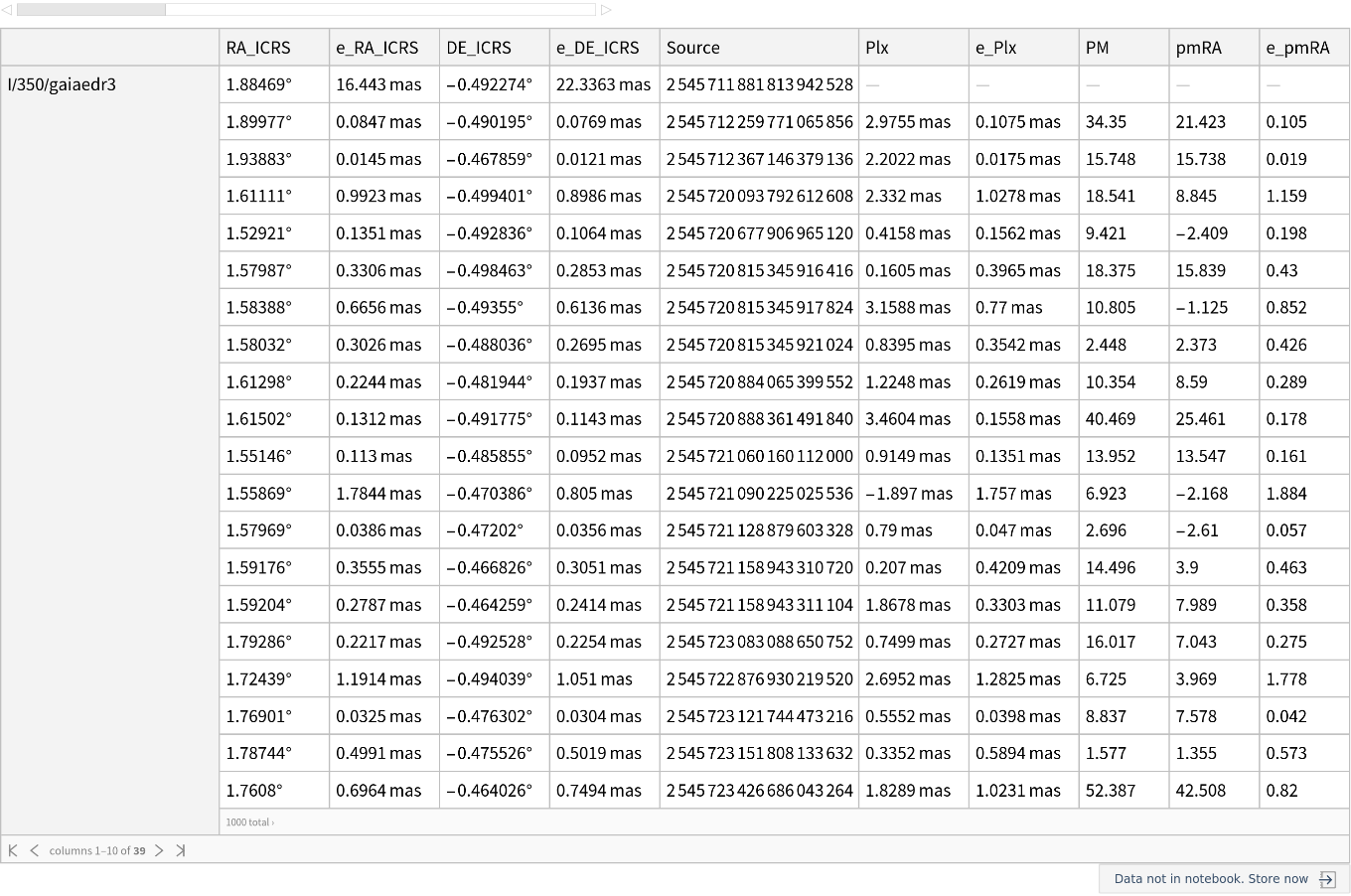 |
Get the Hipparcos number of Rigel star:
| In[26]:= |
| Out[26]= |
Get information of this star in the original Hipparcos Main Catalog:
| In[27]:= |
| Out[27]= |  |
When no catalog is found, an empty Dataset is returned:
| In[28]:= |
| Out[28]= |
Only certain Select functions can be translated to VizieR filters. An error message will be returned if the structure of the filter is not supported:
| In[29]:= |
| Out[29]= |
Get the Cartesian position of the galaxies in the table "J/ApJ/799/95/table8":
| In[30]:= |
| Out[30]= | 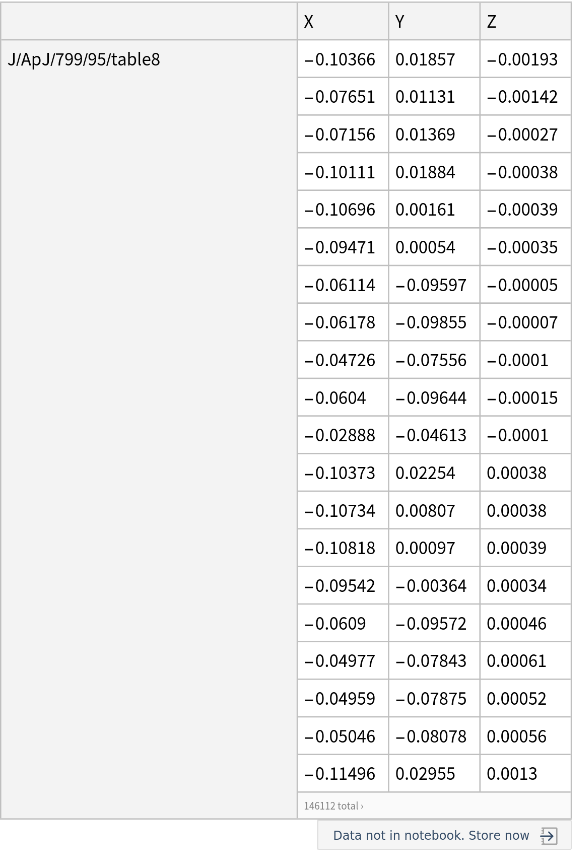 |
Transform the redshift units to Mpc in the small redshift approximation:
| In[31]:= |
| Out[31]= |
| In[32]:= |
| Out[32]= | 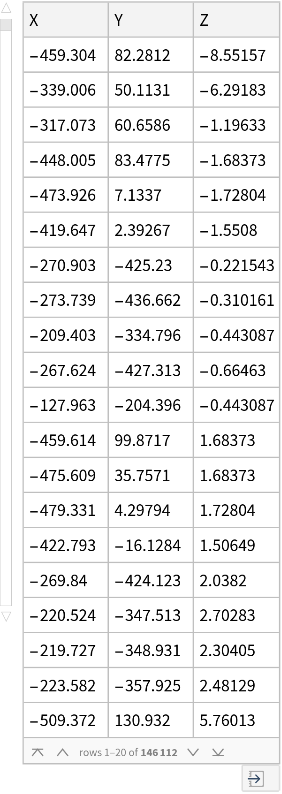 |
| In[33]:= |
| Out[33]= |
| In[34]:= |
| Out[34]= |
| In[35]:= |
| Out[35]= |
Plot the positions of the galaxies:
| In[36]:= | ![Quiet@ListPointPlot3D[Values@Normal[physicalPositions], BoxRatios -> {1, 1, 1}, AspectRatio -> 1, DataRange -> {{xextremes[[1]], xextremes[[2]]}, {yextremes[[1]], yextremes[[2]]}, {zextremes[[1]], zextremes[[2]]}}, Boxed -> False, Axes -> False]](https://www.wolframcloud.com/obj/resourcesystem/images/55d/55d6fee4-63ee-4394-833c-83fa4746bdb7/15485962d81104b5.png) |
| Out[36]= | 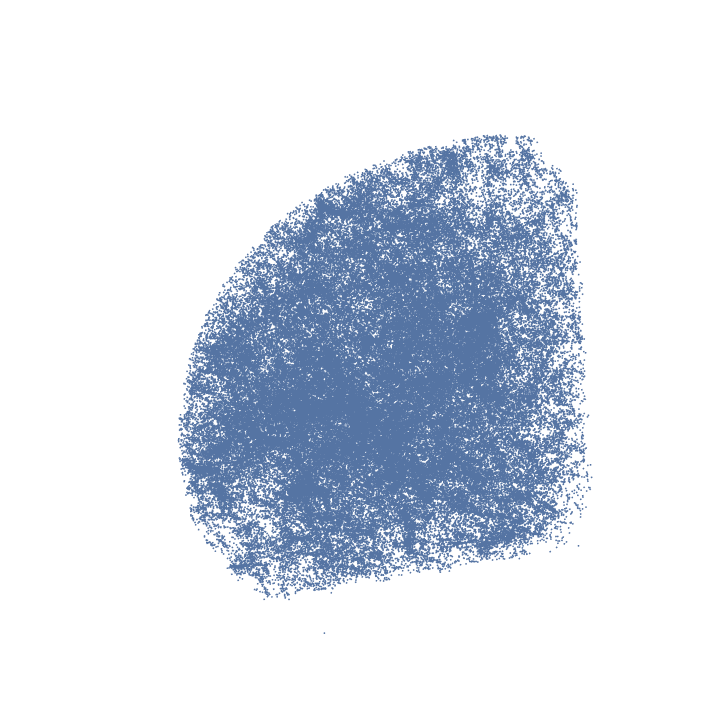 |
This work is licensed under a Creative Commons Attribution 4.0 International License